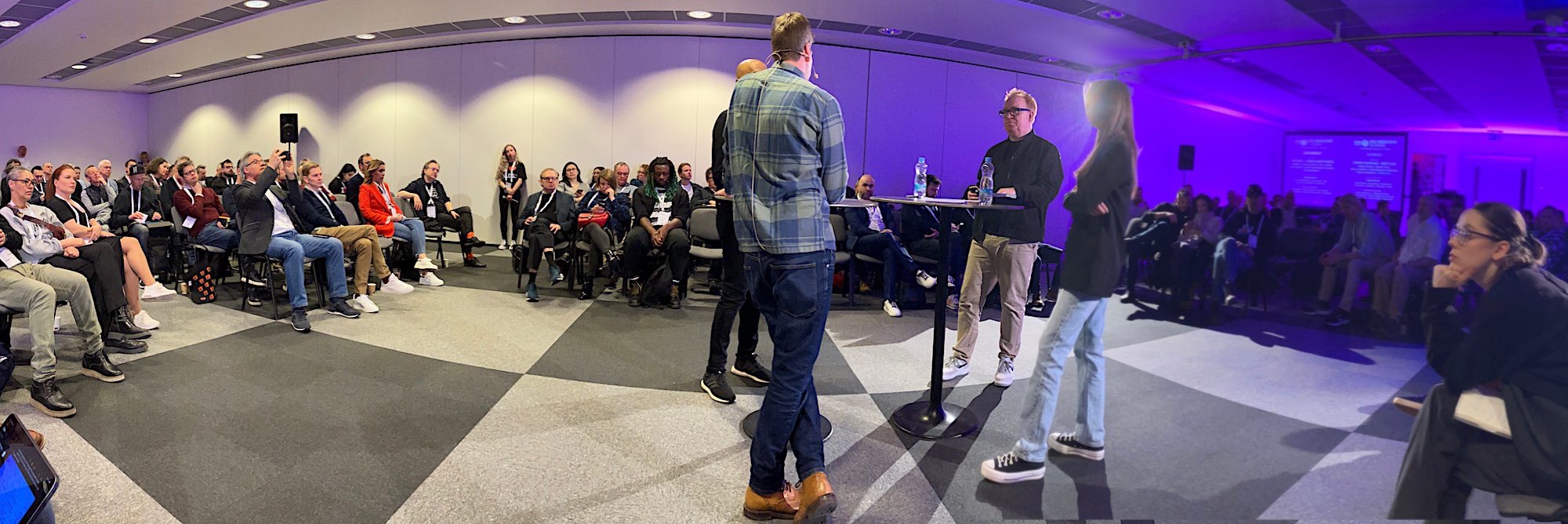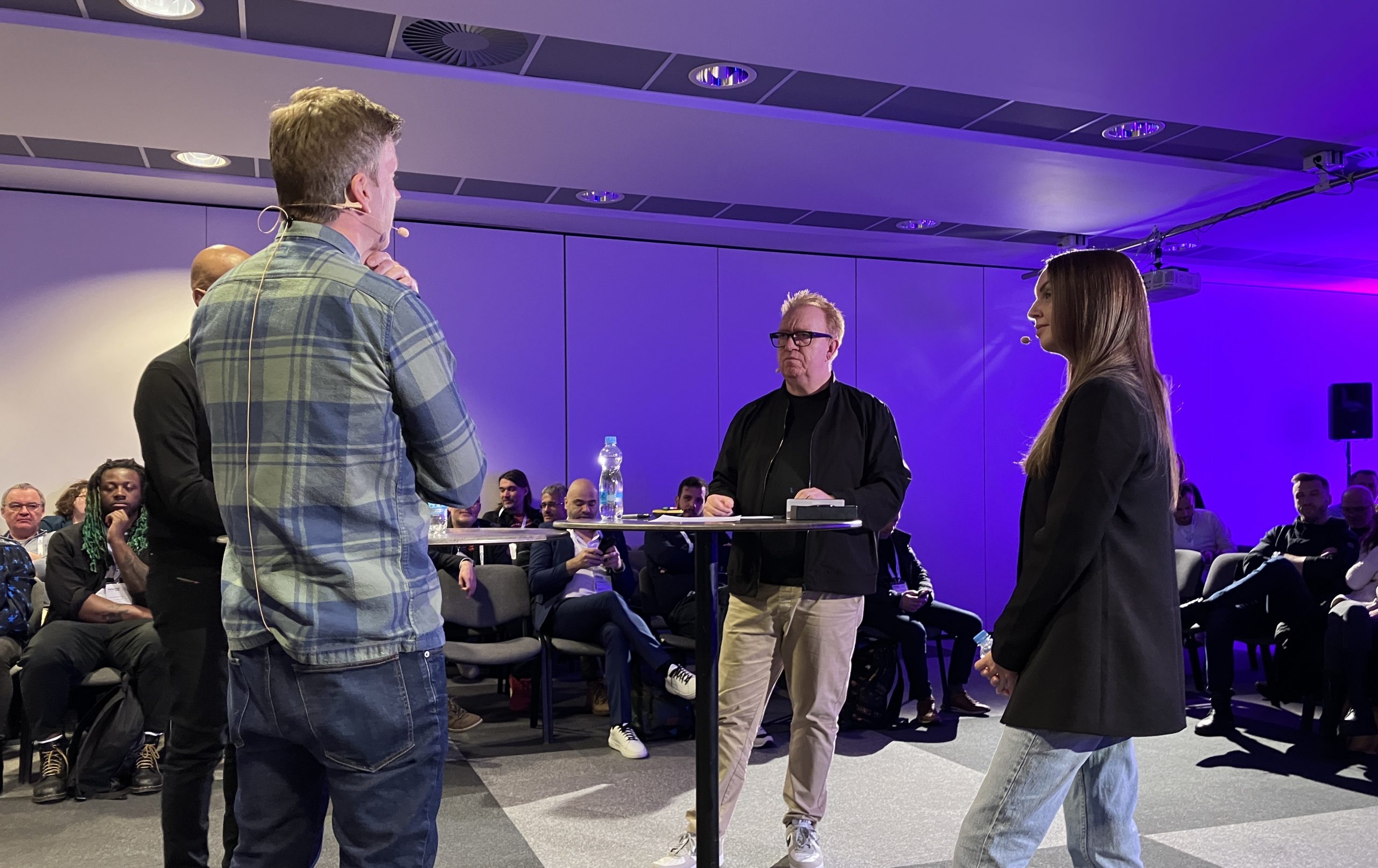Music Directing is an art and a science. The science part is the rotation and playout. The art is the part that connects people to audiences and tries to make every track matter to each listener when and where they hear it.
During an ‘in the round’ session hosted by Nik Goodman at RadioDays Europe last week, three music directors discussed their approach to the art and science of music directing, with input from other music specialists in the round room.
Des Paul, a presenter/producer at Greatest Hits Radio, Lea Stonhill, music programmer at Radio X and Chris Price, Head of music at BBC Radio 1 and 1Xtra all shared their approaches to music programming.

For some stations, programming music by age demographic is now less important than programming by lifestyle. Des Paul’s niche station plays only show tunes, but makes sure it also has cross over with other stations in the company’s portfolio that have wider appeal. It is one of the sub-brands of Bauer Media’s Magic music brand.
In contrast, for the BBC “age is everything,” it is enshrined in BBC Radio’s operating licence and the way it defines each brand. Unlike in Australia, radio stations in Britain are locked to their formats by a promise of performance to the regulator Ofcom and the BBC Charter, so it is difficult to change the target audience.
BBC Radio 1 is aimed at a younger audience of 15-29-year-olds, playing popular music across a variety of genres. BBC Radio 2 and BBC Radio 3 both target audiences 35-54 years old, Radio 2 with Talk and Radio 3 with classical music and cultural programming. BBC Radio 4 targets a more mature audience of 55 years and older, focusing on news, current affairs, drama, and cultural programming. Radio 5 targets 25-54-year-olds, with a focus on sports coverage, news, and current affairs.
With its tightly defined age limitations BBC Radio stations regularly face the dilemma of throwing away one part of their audience and replacing them with another. The corporation hopes that audiences transition to other BBC stations, but in the changing media landscape this is no longer always the case. To help BBC Radio 1 build its position at the younger end of its target audience pipeline, Chris Price says he gives a lot of thought to “making the right relationships with artists for the future and prioritising female artists.”
Lea Stonhill was head of music for Radio X for 7 years, but has recently accepted a job as UK Music Content Manager at YouTube. Commenting on station brands and sub-brands, she observed that “all stations now have sub brands, different versions for a similar, but not the same audience. A sub-brand should increase the number of listeners, not cannibalise the current audience… Niche brands can exist within an ecosystem,” she said.
To a round of applause and laughter Des Paul answered the question, ‘how niche can you go,’ saying, “Not much smaller than show tunes.”
More seriously he explained: “So long as there’s crossover and commonality between your niche stations it will work… there has to be something in common with the master brand.” They may be radio stations, or stations may use other sub-brand strategies such as podcasts or additional streams.
Nik Goodman then threw to another music programmer in the room for an opinion on niche formatting. To another round of laughter, delegates heard about a sub-brand of the kids radio station Fun Kids that only plays music for ‘moments when children just need to chill after playtime.’ Fun Kids Naps is “a station that literally sends its audience to sleep… it fulfills a need.”
Many stations have dropped older forms of music research such as auditorium music testing because, with music streaming services such as Spotify changing the landscape, “the way audiences consume music has moved on… the relationship between who’s telling who what to play, or who the new artists are, has changed.”
BBC Radio 1 has stopped doing call out music research. “It used to help us with recurrents and golds but now it has changed. We’re awash with data from shazam, spotify, Tiktok… We don’t miss the old research, the most important data point for me now is, have we already played this song, is it connecting to our presenters and audience,” said Price. He still values research about burn rate of songs, but otherwise looks at a more holistic view of music research by combining all the plays data from music services with internal reaction from his music specialist team.
Radio 1 has a huge music universe, playing around 12,000 new songs per year, about 1000 a week. This contrasts with some commercial classic hits stations in the US which are on the other extreme of the spectrum, playing as few as 229 songs per week on very high rotation. “They want you to have the song you want as soon as you turn on,” commented another music specialist in the room, Sean Ross.
Radio X’s strategy is a little different again, it is “a catalog station, a rock indie alternative mix,” according to Stonhill.
“It aims to give a full picture of the genre within 20 mins. We kick off the hour with a song that has amazing research for us.” The hourly clock format begins with a familiar song from the noughties, followed by a 90s, then a new song from then current category, then 00s, 90s, a current, into an ad break at the 20 minute mark, followed by a similar rotation each 20 minutes. “Protect your unfamiliar new songs with two familiar songs either side,” advised Price.
BBC Radio 1 does it the opposite way. “We break those rules,” said Price.
Des Paul gave a tip for presenters in formats with high repetition. “Presenters struggle with repetition… we get excited when we see new songs on the list, but finding new content to talk about for the high rotation songs requires hard work from the presenter.”
He also talked about the importance of ‘spice tracks.’ They may not be tracks that test highly or are played often, but they are valuable because they “add something else that gives spice to the hour, something else to talk about, but make sure that there are not too many at once,” he advised
With Artificial Intelligence being a major theme running through many conference sessions the three speakers shared a common view. Music Direction has been using AI for years in its music scheduling systems and MDs are used to adapting to the latest features, machine learning will help scheduling systems further evolve, but the art of music directing is in the choice of music and the way it connects to the audience. “You have to have cultural knowledge to program music that works for real radio.”

